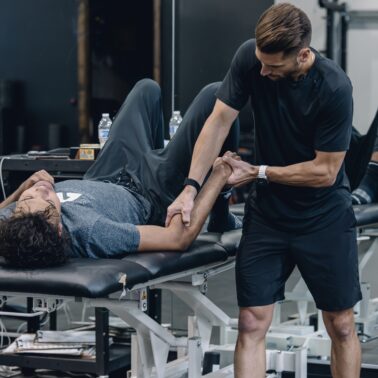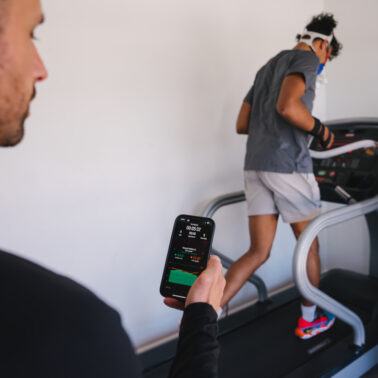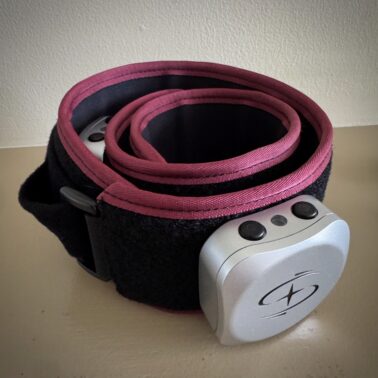Approximate Read Time: 14 minutes
“You’re not just training a system — you’re stressing tissue. Understanding the minimum effective dose and the exact tissue recovery are the principles for any periodization model.”
What You will learn
- How residual training effects define how often a physical quality must be trained.
- How different tissues recover at different rates after stress.
- Why all periodization models rely on the same two foundational concepts.
- How to apply these principles to ACL rehab in soccer and basketball athletes.
- How to use a simple framework to organize your training and return-to-play progressions.
Periodization Needs Clarity.
We’ve all seen it. The performance debate over linear vs. undulating, triphasic vs. block, tactical vs. traditional. Or in the rehab space the outdated 3 sets of 10 or 2 sets of 20. But when you zoom out, you’ll see that every successful periodization model is built on just two biological realities:
- Residual Training Effects — how long a trained quality “sticks.”
- Tissue Recovery Timelines — how long it takes for different tissues and systems to tolerate reloading.
Understanding these two truths allows any coach, physical therapist, or performance practitioner to build, adapt, or even hybridize a model that works. And it does more than make your programming effective—it keeps your athletes safe.
Principle 1: Residual Training Effects — How Long Does It Last?
Originally highlighted in Issurin’s Block Periodization, residual training effects explain how long various physical qualities remain trainable without retraining. More simply put, what is the minimum effective dose necessary to maintain qualities?
Let’s look at specific systems and athletic qualities below:
| System/Quality | Residual Effect (days) |
|---|---|
| Aerobic Energy System | 30 ± 5 |
| Strength | 30 ± 5 |
| Anaerobic Energy System | 18 ± 4 |
| Power | 15 ± 5 |
| Creatine-Phosphate System | 5 ± 3 |
| Speed | 5 ± 3 |
This means strength and aerobic capacity can tolerate lower training frequencies than speed or power. So if you’re only hitting speed work once every 10 days, don’t be surprised when it diminishes.
In the context of rehab, we can leverage residual training effects to help minimize the detraining effect that occurs from prolonged injury recovery. Want to minimize speed and power deficits, then provide an intervention that stresses these such as medicine ball work or contralateral limb training every 5 days.
When it comes to performance training, we can periodically dose these within any training program. Majority of training programs often have a one to two goals in mind, but we can still maintain all to the other major athletic qualities if we periodically provide a stimulus for each system.
For example, if you were focusing on a maximal strength program, then be sure to add a short speed stimulus every 5 days and a decent aerobic workout every few weeks.
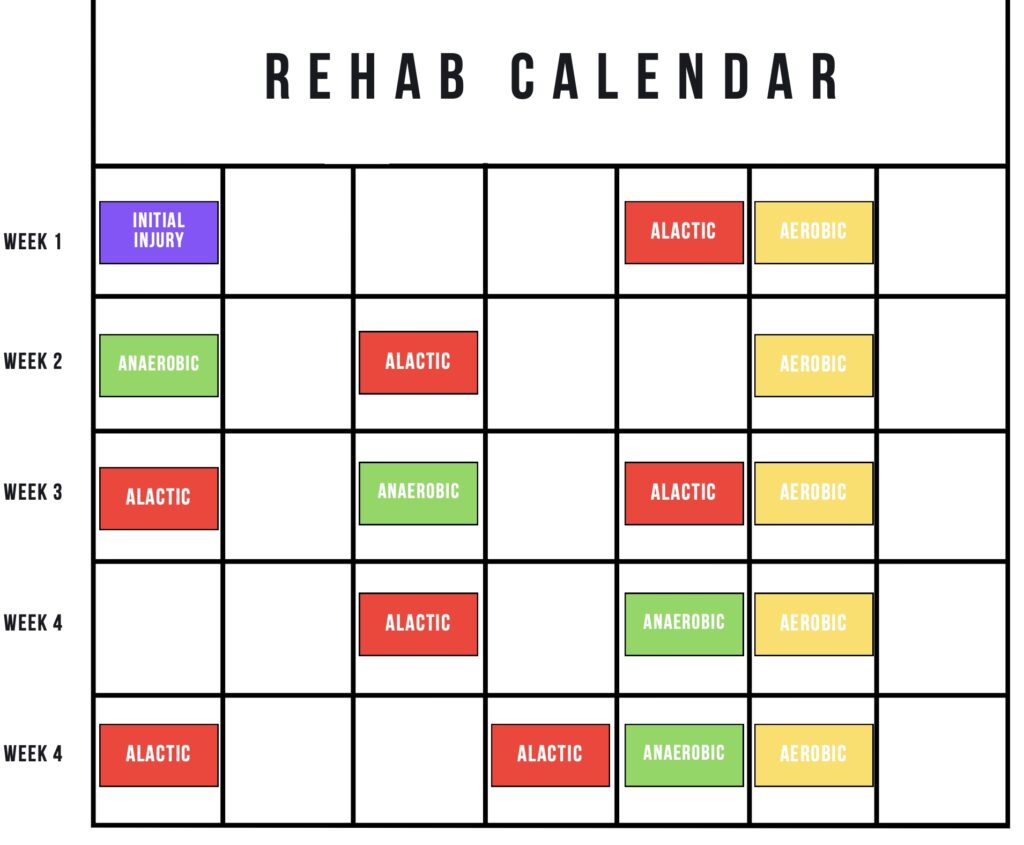
Principle 2: Recovery Timelines — How Soon Can You Go Again?
Tissue type matters. Not all structures regenerate at the same pace. According to Gabbett & Oetter (2024), recovery time depends on volume, intensity, and which tissue or system you’re loading.
- Cartilage can handle frequent loads with <30 min recovery.
- Tendon and CNS often need 48-72+ hrs after high-load exposure.
- Bone loses mechanosensitivity after 20 reps, but can reset after 4-8 hours.
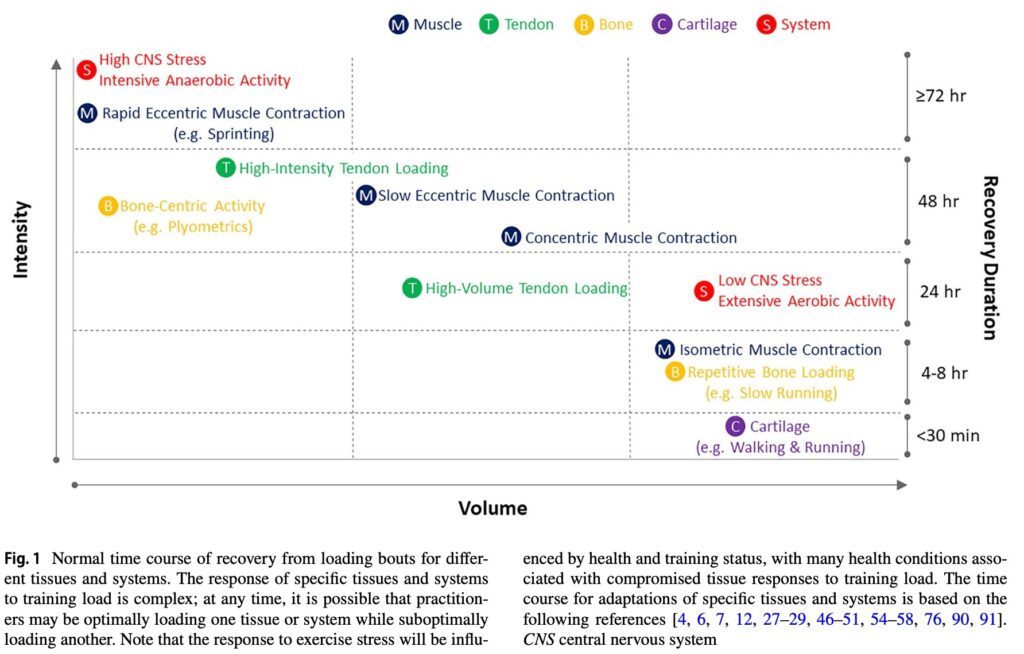
All Periodization Models Lead Back to This
When we really pullback the curtain on what periodization is, it can be reduced down to these key principles of residual training effects and tissue recovery. As we will discuss further in this article, the final component to any periodization model is exposure. But before we talk about exposure, let’s revisit some common periodization models.
Block Periodization emphasizes one quality at a time — aligned with the longer residual effects of strength and aerobic systems.
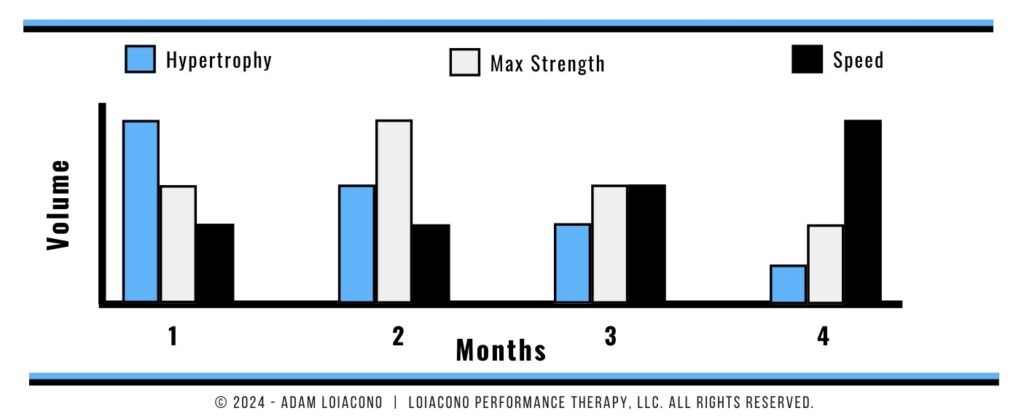
Undulating models work well when different tissues can be stressed sequentially (e.g., strength on Monday, speed on Wednesday, aerobic on Friday).
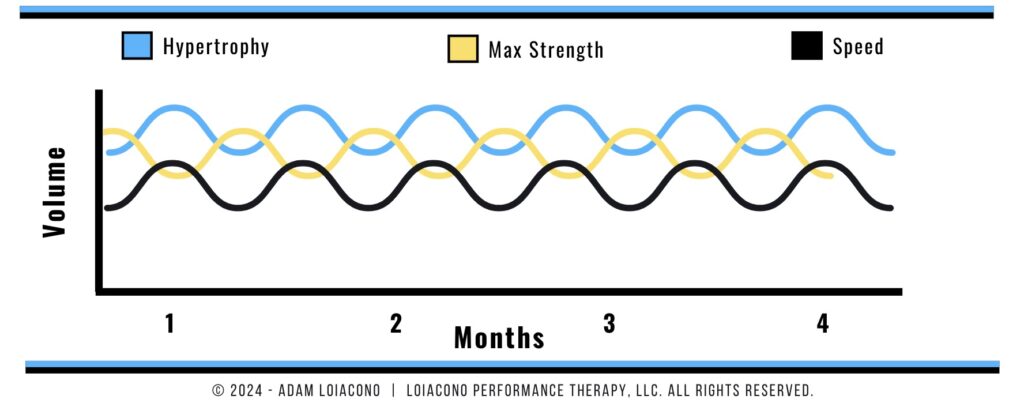
Triphasic models respect contraction type (eccentric = longer recovery) and allow loading different qualities in isolation.
Tactical Periodization — now popular in soccer and basketball — respects the real-life interplay of energy systems and tissue-specific stress during actual sport.
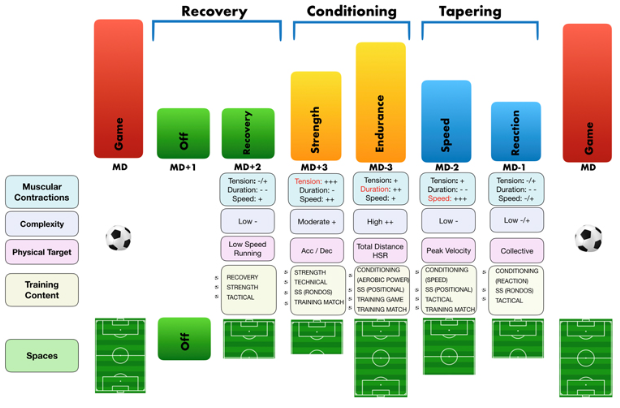
Regardless of which you prefer, or perhaps you use a combination of them all. They all incorporate the concepts of residual training effects and tissue recovery. Now, let’s tie them both together with one of the key principles from my 3P Toolkit: Exposure.
Integrating the 3P Framework: Exposure
“Slow when you can. Fast when you must.” — Jim Collins, Great by Choice
One of the core principles of my 3P Injury Prevention Toolkit is Exposure — the gradual, structured application of training stress. Think of it as the translator between Residual Effects and Recovery Timelines.
- If you train too often: You violate tissue recovery timelines.
- If you train too infrequently: You lose adaptation via residual decay.
Exposure answers: “How frequent do I apply a stress to maintain without breaking down?”
The quote by Jim Collins is one of my favorites. We all have been in situations where we must got faster than we want. Whether that’s because the injury timeline is running up against playoffs or a training program is condenses due to increased competition schedules.
Like most things in life, when time is on your side, things tend to go well. Not saying we cannot be successful going fast, we certainly can. But remember, the steeper the climb, the harder the fall.
Case Study: ACL Return to Play (Month 6–7)
Let’s provide context to this in real life. Consider a 19-year-old collegiate soccer player, 6-7 months post-op from ACL reconstruction. By this phase:
- Graft protection windows are cleared.
- Strength deficits are minimal.
- Movement confidence is returning.
How do the two principles guide our weekly structure?
- Speed: Needs 2x/week minimum to maintain. But sprinting stresses tendon, CNS, and rapid eccentric muscle contraction. Use 48-72 hr spacing.
- Strength: Heavy lifts can be done 1-2x/week. Supplement with isometrics on lighter days.
- Aerobic Work: Use steady-state runs or tempo runs to build capacity, with minimal tissue stress.
Same case study, but let’s view it through the lens of basketball. In this sport, the frequency of explosive jumping, rapid deceleration, and constant changes of direction create a heavier load on the central nervous system (CNS) and tendon structures—especially the patellar and Achilles tendons.
Unlike soccer, where movement is more linear and stride-based, basketball introduces repeated, high-force vertical efforts and lateral stops. As a result, athletes in the post-op ACL phase must be carefully dosed with high-impact stimuli. A Monday plyometric session might not be recoverable by Wednesday if the athlete still shows signs of knee soreness, tendon stiffness, or altered movement mechanics. Practitioners should consistently track subjective feedback and monitor tendon reactivity—especially 24 to 48 hours after loading days.
On lighter days, recovery doesn’t mean doing nothing. It means smart substitution. Aquatic treadmill running, deep water pool intervals, and upright cycling can maintain aerobic capacity without applying axial load to the knee. These options also reduce CNS strain while maintaining general work capacity. Isometric work—such as 45° wall sits or Spanish squat holds—can be used to stimulate tendon remodeling without excessive movement. These strategies enable us to train “around” the vulnerable tissue, preserve fitness, and avoid unnecessary regressions, while still respecting the biological demands unique to basketball’s neuromechanical profile.
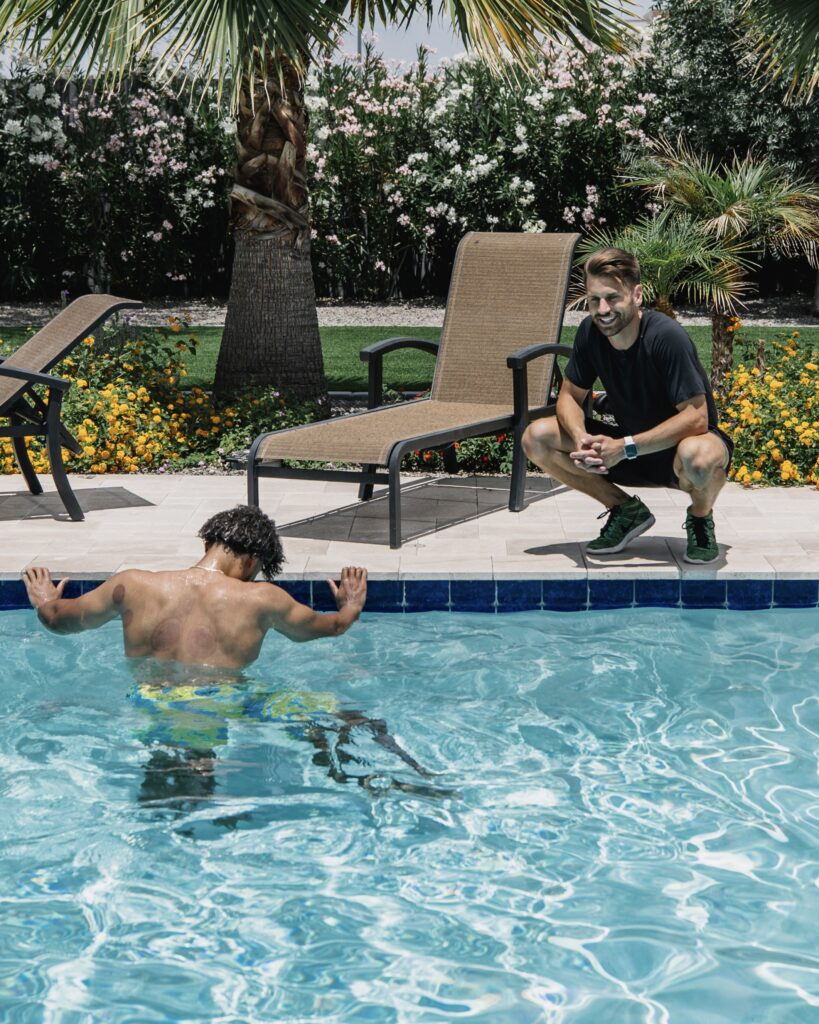
Master Simplicity to Scale Complexity
If you’re overwhelmed by periodization theory, good. That means you care. But remember:
- Residual effects tell you how long adaptations last.
- Recovery timelines tell you how soon you can go again.
- Exposure bridges the two.
When you respect biology, your plan writes itself.
Let these truths shape your process. The rest is just formatting.
Recommended Listening:
References
- Issurin V. Block Periodization: Breakthrough in Sport Training. Ultimate Athlete Concepts, 2008.
- Gabbett TJ, Oetter E. From Tissue to System: What Constitutes an Appropriate Response to Loading? Sports Medicine. 2024. https://doi.org/10.1007/s40279-024-02126-w
- AdamLoiacono.com. 3P Injury Prevention Toolkit.

